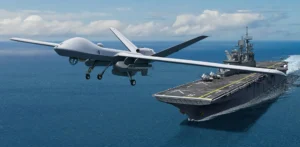The Defence Research and Development Organisation (DRDO), with a network of 52 laboratories nationwide, has seen huge cost overruns and project delays over recent years
by Girish Linganna
The Defence Research and Development Organisation (DRDO), with a network of 52 laboratories nationwide, has seen huge cost overruns and project delays over recent years. Girish Linganna explores…
The Defence Ministry recently made a well-informed decision to initiate a thorough and substantial overhaul of the Defence Research and Development Organisation (DRDO). Notorious for project delays and huge cost overruns — its missile programme successes notwithstanding — the DRDO is currently on the brink of a transformation aimed at boosting its technological progress beyond just its missile program.
The tri-services, at meetings with Defence Minister Rajnath Singh and the DRDO, had highlighted their considerable list of grievances against the significant project delays by the organization. These grievances concerned not only fighter aircraft, tanks, unmanned aerial vehicles, communication systems and advanced battery systems for the Navy, but even basic assault rifles.
Leading this transformation is a committee comprising nine members, under the chairmanship of K Vijay Raghavan, former Principal Scientific Adviser to the government, drawing expertise from defence, industry, academia and the ministry, itself. The committee has been given three months to come out with recommendations on restructuring and redefining the role of the DRDO, facilitating international collaborations, attracting and retaining high-calibre talent and optimising its research endeavours.
The committee comprises former deputy Army chief Lt-Gen Subrata Saha (Retd), the prime mover behind the army’s reach out to the Indian defence industry. Other members are Vice-Admiral SN Ghormade (retd), former chief of the Integrated Defence Staff (IDS) Air Marshal BR Krishna (retd), JD Patil of Larsen and Toubro, and Mahindra Group’s SP Shukla, who is also president of the SIDM, an industry grouping of Indian defence companies.
Sujan R Chinoy, head of the MP-IDSA think tank and Manindra Agarwal of IIT-Kanpur, distinguished ISRO scientist S Unnikrishnan Nair, and the Defence Ministry’s Financial Adviser, Rasika Chaube, are also part of the panel.
The DRDO, established in 1958 by merging the Defence Science Organisation and several technical development establishments, operates under the Defence Ministry. With its headquarters in New Delhi, the DRDO is India’s primary research agency, encompassing a range of laboratories dedicated to advanced defence technologies in such areas as electronics, aeronautics, land combat engineering, armaments, missiles and naval systems. From its modest beginnings with just 10 laboratories in 1958, DRDO has expanded into a formidable institution, now encompassing a network of 52 laboratories and facilities spanning the nation.
Karnataka alone has 14 laboratories:
1) Aeronautical Development Establishment (A.D.E), Bangalore
2) Aeronautical Test Range (ATR), Chitradurga, Karnataka
3) Centre for Airborne Systems (CABS), Bangalore
4) Centre for Artificial Intelligence and Robotics (CAIR), Bangalore
5) Defence Avionics Research Establishment (DARE), Bangalore
6) Defence Bioengineering and Electromedical Laboratory (DEBEL), Bangalore
7) Defence Food Research Laboratory (DFRL), Mysore, Karnataka
8) Gas Turbine Research Establishment (GTRE), Bangalore
9) Electronics and Radar Development Establishment (LRDE), Bangalore
10) Microwave Tube Research & Development Centre (MTRDC), Bangalore
11) Society for Integrated Circuit Technology & Applied Research (SITAR), Bangalore
12) DRDO Young Scientist Laboratories (DYSLs), Bangalore
13) Centre for Military Airworthiness & Certification (CEMILAC), Bangalore
14) Advanced Centre for Excellence on Composite Materials (ACECM), Bangalore
The DRDO embarked on its initial venture for the armed forces with Project Indigo, focusing on surface-to-air missiles (SAMs). Unfortunately, the project did not yield significant results and was subsequently terminated.
Nevertheless, since its establishment, the DRDO has made remarkable strides in creating essential systems and vital technologies. These achievements span diverse domains, including aircraft avionics, unmanned aerial vehicles (UAVs), small arms, artillery systems, electronic warfare (EW) systems, tanks and armoured vehicles, sonar systems, command and control set-ups, as well as missile systems.
In March 2019, the DRDO achieved a significant milestone by creating India’s inaugural anti-satellite system, elevating the nation’s standing as a space powerhouse. In 2016, the organization accomplished a successful trial of its inaugural domestically produced heavy-duty drone, Rustom 2, an unmanned armed combat vehicle designed akin to the US Predator drone.
Collaboratively, the DRDO contributed to the development of the INS Arihant, India’s debut nuclear ballistic missile submarine, which attained operational status in 2018. Another noteworthy invention is the BSAT, an automatically ejected black box for aircraft, designed to aid rescuers in locating debris following a water crash.
Additionally, the DRDO has spearheaded the creation of multiple ballistic missiles through its Integrated guided missile development program, encompassing missile varieties such as Prithvi, Trishul, Agni, Akash and Nag. However, going forward, the revamp of this gargantuan behemoth will only further India’s indigenous defence capabilities.
Source link
#Explained #team #tasked #overhauling #DRDO






